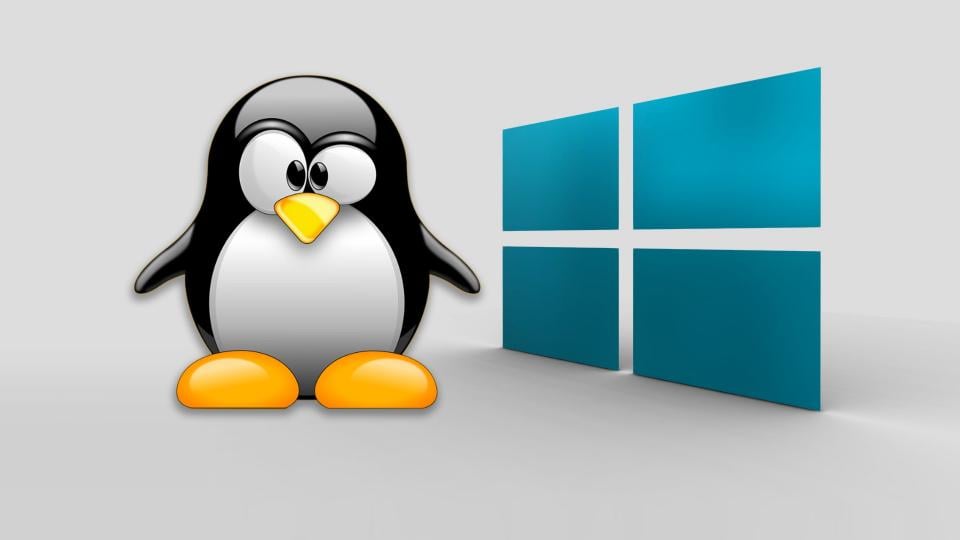.
Who would have thought that one day, after the declaration given in 2001 by the then CEO of Microsoft, Steve Ballmer, that the “Linux is a cancer”, this vision of a system that for some time was seen as a threat to Windows, would change radically to the point of Satya Nadella, the current executive director of Microsoft, saying: “Microsoft loves Linux“?
And it seems that this statement, given in 2014 by Ballmer’s successor, was not just due to the fact that 20% of VM’s (virtual machines) in Azure used the open source operating system.
A few more years pass and a new announcement comes from the company from Redmond, which now has a distro to call its own – Azure Linux!
What is Azure Linux?
As already mentioned, Azure Linux is a distro created by Microsoft and announced by Microsoft’s director of programs, Jim Perrin, in a press conference about the system, during the Microsoft Build 2023on May 23, 2023.
But it is not a distro aimed at the “ordinary” user, as it usually is when talking about the best and most popular Linux distributions, such as the popular Ubuntu, or the practical and easy Linux Mint, or even the classic Fedora.
Its public is the final and corporate user, more specifically the customers of the universe of services based on cloud computing (cloud computing) from Microsoft, just called azure.
Azure Linux is a “lightweight, secure and reliable” system with optimized performance for the platform Azure Kubernetes Service (AKS) and which in short, is an open source tool for automating the deployment, management and scaling of containerized applications, or as some like to call it, just container orchestration.
Therefore, those who expected to see an alternative to Windows, from Microsoft itself, have not been this time.
Features of Azure Linux
As the distribution starts to reach users, we should have more details about it, but from the presentation, some information was already possible to know:
- This is not a fork (branch or branch) of Fedora, but a completely new development from scratch, based on RPM packages – like Fedora itself and RedHat – and aiming to be 100% suitable for MS needs;
- The graphical interface is quite simple / minimalist and prioritizes the use and power of Linux command lines, but which Microsoft here calls Azure CLI (Command Line Interface);
- Despite having been primarily developed by the Microsoft team, having even been used by the development team for a few years, in a project named as CBL-Mariner and available on GitHubalso had some collaboration from the developer community, as is often the case with some distros;
- The distro was born because they needed an internal distribution – from MS itself – and that was consistent for their use and that soon showed that it made sense to make it available to AKS (Azure Kubernete Service) users;
- It is much leaner than the vast majority, aiming to be light and fast and, above all, to have only what is essential for its purposes, without icons and other things of most operating systems. The system image is only about 400Mb in size and contains only 300 packages essential for typical use;
- It has been optimized for use with Hyper-V (virtualization) for cloud and edge computing;
- Allows working with different architectures available in Azure (ex: ARM_64 or X86_64);
- It has been thoroughly tested to work with all packages and images available in AKS;
- Proposal to make available CVE’s (acronym in English for Common Vulnerabilities and Exposures) patches within 72 hours;
- Some documentation already Microsoft Learn.
What is Microsoft Azure?
Microsoft Azure is Microsoft’s cloud computing platform and currently allows running a wide range of applications and commercial products from the company, such as Xbox games, for example.
In practical terms, Azure is a complete infrastructure for what you can imagine that today cloud computing can demand, such as website hosting, app hosting, virtual machines, virtual networks, various data storage, in a total of options. which, according to them, includes more than 200 services.
Choose Azure or any other alternative, such as AWS (Amazon Web Services) or Google Cloud Platform (GCP), who needs:
- Availability, as these environments usually have redundancy, which means that when your application is sent to Azure, it is replicated to at least 2 servers in such a way that if any problem happens, it will still be available / accessible;
- Scalability is another characteristic of the cloud, which means that it is possible to define rules that allocate more virtual machines, more processing, more memory according to variations in application demand, automatically;
- The cost, which is an aspect that is always a concern, is based on the “pay-as-you-go” model and which in practice accounts for the above variable use in minutes, that is, exactly according to what was spent.
A good part of the virtual machines that exist in Microsoft’s cloud are Linux, reflecting the prevailing scenario on the Web, regardless of the platform.
Without much fanfare, MS Azure was announced in 2008 and gradually grew, offering more options until it became a complete cloud environment, not only for its customers, but for the company itself, which changed from the old paradigm of selling software for local installation and use, for use as a service, such as Windows 365, Office 365 and Dynamics 365, which can be accessed by various devices connected to the Internet, from anywhere and at any time.
The great advantage of the cloud is that companies do not need to invest in physical infrastructure, local and internal to the company, as well as everything that this infrastructure required, such as the know-how to put it into operation.
Knowledge is now limited to operating/using the service.
If in the past something went wrong, or if needs changed quickly, which is a real possibility in a rapidly changing world, what to do with what had been invested?
Companies don’t need to simply give up their models of the past and they can migrate little by little, gradually, in what is called a hybrid model.
So you can still have systems and solutions running on your local servers, plus querying a database in the Azure cloud.
A bit of the “dating” history between Microsoft and Linux
The launch of a “Linux distro by Microsoft”, is just the most recent chapter of a relationship that seems to have started with the surprising declaration of Satya Nadella, in the already distant year of 2014.
News about previously unlikely flirtations between big tech defenders of proprietary code and the operating system symbol of open source, appear from time to time. Some are confirmed, while others gain the status of mere rumours.
For example, since 2018, more precisely in Windows 10 and from version 1607, Windows Subsystem for Linux or just WSLas it initially appeared and which basically makes it possible for developers to run a GNU/Linux environment, its command lines, as well as some utilities and applications, directly on Windows.
In other words, it would be almost like having Linux running from Windows, without having to resort to a traditional virtual machine and the overhead that this represents for a lot of hardware, or a dualboot installation.
That in itself was a surprise to many people.
Earlier, however, in 2016, as a result of a partnership with Canonical, the company responsible for Ubuntu, Microsoft announced that in the Windows 10 Anniversary Update, “Bash shell is coming to Windows”.
For those who don’t know, Bash is a command interpreter also known as Shell, so that with that, Linux commands would run inside the Windows 10 console, via CMD (from Windows).
With the feature, through a console, users would have many Ubuntu and therefore Linux commands, such as awk, sed, grep, vi, among others. Furthermore, some binaries can be downloaded by the user using apt-get, such as Ruby, Redis and emacs.
There were those who thought that Microsoft had bought Canonical. There were those who said that Ubuntu was going to end. The list of speculations was long.
In 2021, almost every website and technology channel had already reported that Bill Gates’ company already had its version of the Penguin operating system and that it was called CBL Mariner (Commom Base Linux and Mariner would be the codename of the version).
Also on the 21st, the stable version of the Edge web browser for Linux arrived and which, according to many reviews, is considered one of the best browser options for the operating system, remembering that Edge is based on Chromium, an open source project.
A year earlier, in 2020, as it was in the most recent announcement, that is, also at the Build conference for developers, came the news that it would make three different versions of Linux available (Ubuntu, Fedora and Suse) in the Windows Store. Currently the list is broader and includes other distros, such as Kali Linux, Debian and even Oracle Linux.
Anyway, the animosity between two of the main representatives of the software world, seems to have died of the same disease that Ballmer mentioned in his disastrous statement.
Conclusion
The launch of the Azure Linux distribution by Microsoft shows a necessary and sensible approach to the directions that the software industry has been taking.
.








